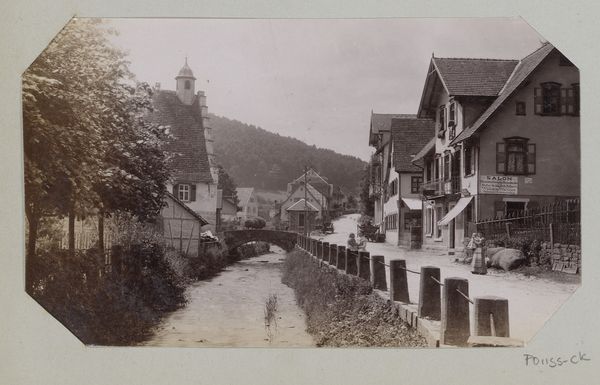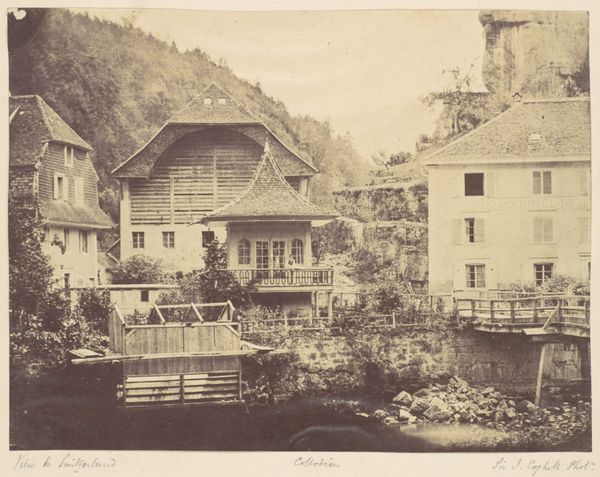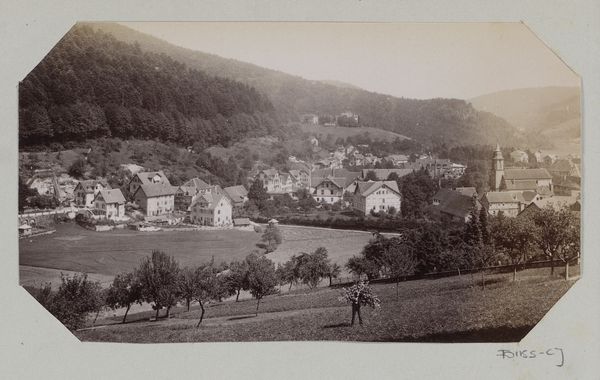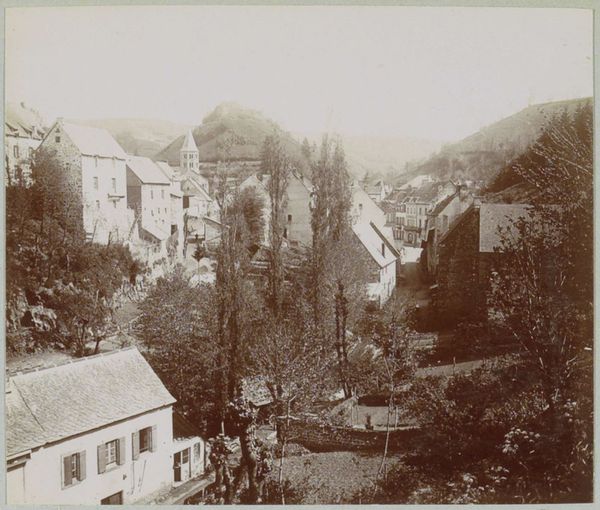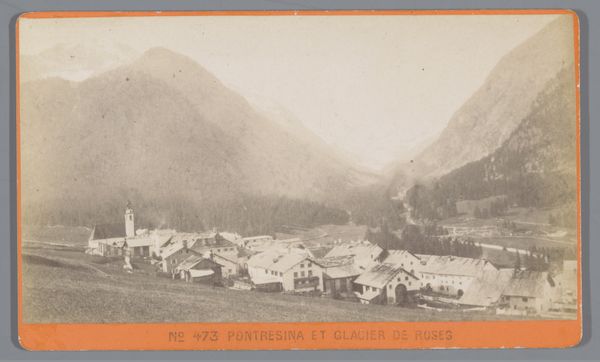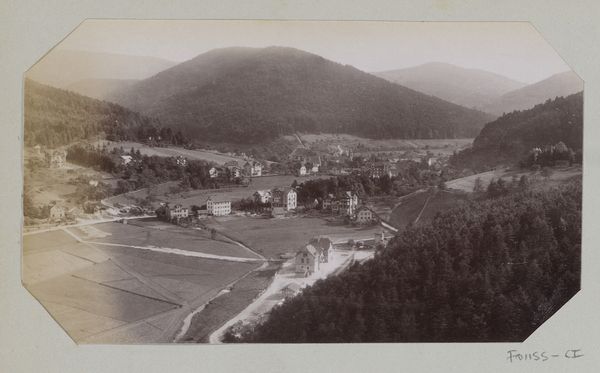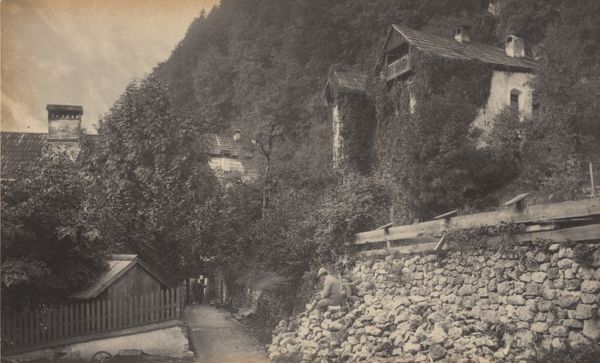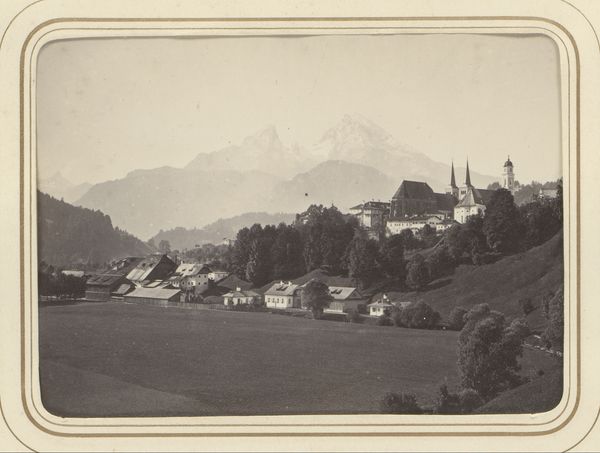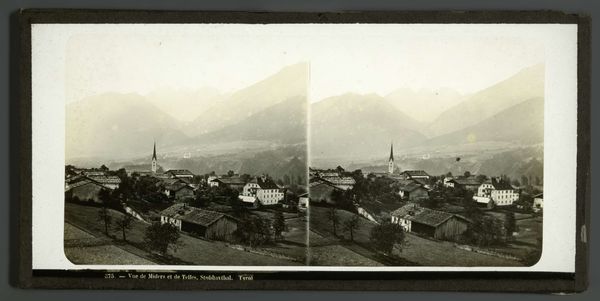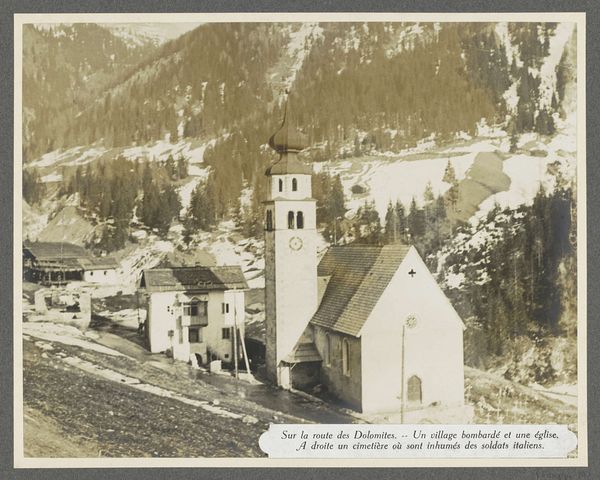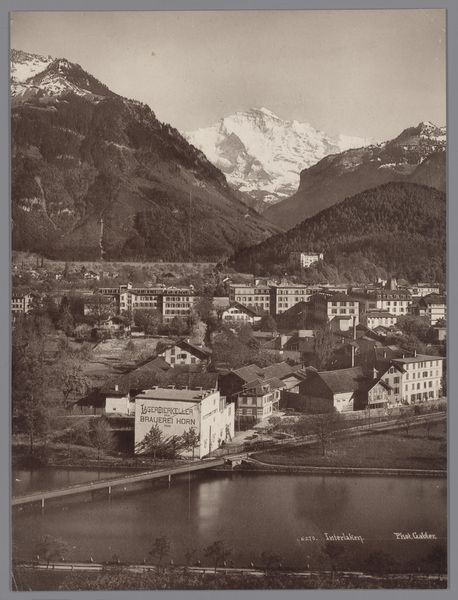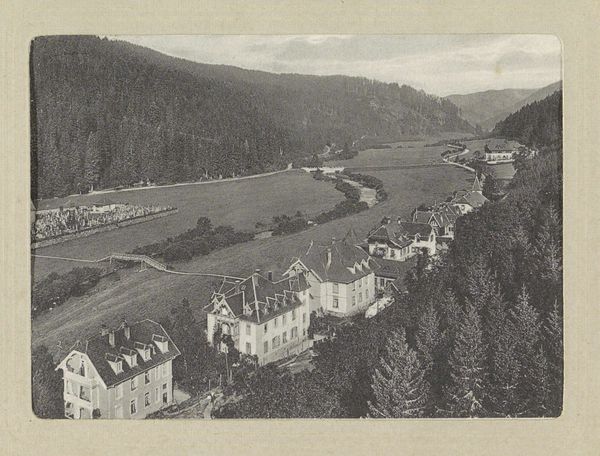
photography
#
pictorialism
#
landscape
#
photography
#
cityscape
Dimensions: height 78 mm, width 110 mm
Copyright: Rijks Museum: Open Domain
Curator: Looking at this vintage photograph, likely taken between 1890 and 1910, we see a cityscape nestled within rolling hills, titled "Gezicht op het kerkdorp Valbert en omliggende heuvels." It evokes a sense of tranquility. What are your immediate thoughts? Editor: It reminds me of building blocks. All those structures climbing up the hillside. It must have taken a lot to make these, with all those gables, those roofs. How did they haul all of this materials, back then, in such mountainous landscape? Curator: The photograph really does highlight the convergence of nature and culture. You have this picturesque, almost fairy-tale village seemingly embracing the valley's natural contours, almost carved from the mountainside. There is the repetition of buildings, giving rhythm to the natural landscape. Editor: It feels incredibly managed. Note how dense and homogenous are those wooden constructions! Was this a place meant to look healthy, restful? Is the built landscape there to tell us about local forestry management and how all this building could impact the community nearby? Curator: Pictorialism as an artistic movement strived to make photography more artistic, less mechanical. We often see this manifested through soft focus and a conscious manipulation of tones to imbue an image with emotional weight. This work encapsulates that ethos, softening the hard lines of the built environment with an ethereal atmosphere. Perhaps trying to tame nature for the industry to prevail... Editor: Taming it? Or just trying to display how human labor transforms the natural world. How they built railroads that crisscrossed the mountains and helped extracting and transforming raw materials into those villas. In any case, this photography gives prominence to craftsmanship and local materials; however romanticised it is. Curator: You highlight the dialectic so well. What might seem like a quiet scene carries these implicit tensions between the untouched vista and human touch! The church spire rises as a focal point and symbolic nod. Editor: Absolutely. It shows that our reading of images relies on considering these material realities; in order to be sensible we must engage into that sort of contextual understanding. It sheds light on how deeply human industry transforms landscape, not merely decorates it. Curator: A valuable perspective indeed! It shows us, the enduring connection between people and places—whether in harmony or in contest. Editor: Indeed. It offers a powerful, tangible perspective of this intersection, one worth remembering.
Comments
No comments
Be the first to comment and join the conversation on the ultimate creative platform.

